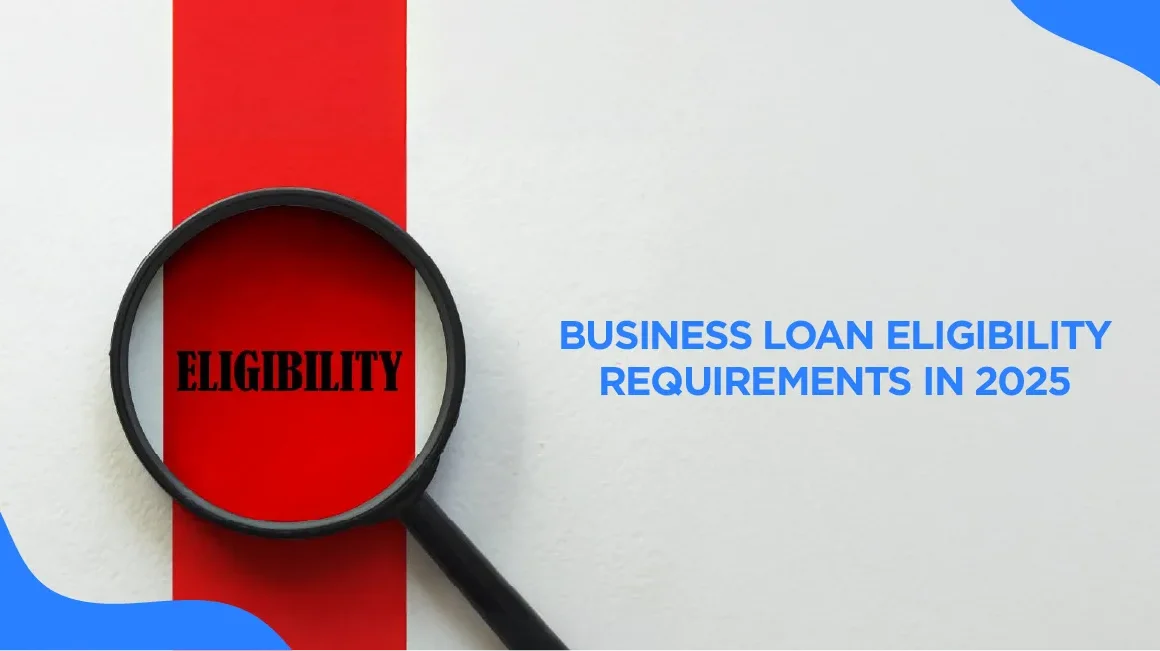Introduction
Applying for a business loan is a significant step in the journey of any entrepreneur or business owner. Whether you are seeking capital to expand operations, manage cash flow, purchase equipment, or invest in marketing, the way you approach the application process can make all the difference in securing the funds you need. The lending environment in 2025 is competitive and varied, with options ranging from traditional bank loans to online lenders and government-backed programs. To maximize your chances of approval and secure the best possible terms, it’s crucial to follow a strategic, well-prepared application process.
This article explores the best way to apply for a business loan in 2025. From understanding your financial needs, preparing documentation, choosing the right lender, to submitting a strong application, we’ll guide you through every step. Additionally, you’ll find answers to common questions, a conclusive summary, and key takeaways to help you make informed financing decisions.
Key Takeaways
- Understand your loan purpose and amount before applying.
- Know your credit and financial status and improve if needed.
- Prepare all required documents thoroughly.
- Research and compare lenders carefully.
- Choose a loan type that fits your business needs.
- Submit a clear, detailed application.
- Follow up professionally and review offers before accepting.
- Manage your loan responsibly to support business growth and future financing.
Why the Loan Application Process Matters

The loan application process is a critical phase in securing financing for your business. It’s more than just filling out forms and submitting documents—it’s your opportunity to showcase the financial health, credibility, and growth potential of your business to potential lenders. Understanding why this process matters can help you approach it with the right mindset and preparation, ultimately increasing your chances of approval and securing favorable loan terms.
1. First Impressions Count
Lenders receive numerous loan applications daily, and your application is often their first direct interaction with your business. A well-prepared, complete, and organized application creates a positive first impression, signaling professionalism and seriousness. On the other hand, incomplete or sloppy applications can raise red flags, causing lenders to doubt your reliability or ability to manage finances, which might lead to quick rejection.
2. Demonstrates Financial Responsibility and Credibility
The loan application process requires you to present a clear picture of your financial situation, including income, expenses, assets, liabilities, and credit history. By compiling accurate financial statements, tax returns, and a comprehensive business plan, you demonstrate your understanding of your business finances and your ability to repay the loan. This transparency builds trust with lenders, showing that you are a responsible borrower.
3. Improves Chances of Loan Approval
A thorough and accurate application reduces uncertainties and questions lenders might have. The clearer you are about your loan purpose, how much you need, and how you plan to repay it, the more confident a lender will feel about extending credit. Properly addressing lender requirements and providing all requested documentation helps prevent delays and additional scrutiny, which can otherwise slow down or derail your application.
4. Helps Secure Better Loan Terms
The quality of your application doesn’t just affect whether you get approved, but also the terms of your loan. Lenders may offer lower interest rates, higher loan amounts, or longer repayment periods to applicants who present a strong financial profile and well-prepared documentation. Conversely, a weak application can result in higher rates, stricter terms, or even being asked for collateral or personal guarantees.
5. Saves Time and Reduces Stress
By approaching the loan application process methodically—knowing what documents you need, understanding the lender’s criteria, and having your financials in order—you can complete the application more efficiently. This saves you time, reduces the frustration of back-and-forth requests, and speeds up funding. It also reduces the emotional stress of uncertainty, knowing you’ve done your best to put forward a strong case.
6. Avoids Costly Mistakes
Errors or omissions in your application can be costly. Mistakes can cause your application to be rejected outright or delay approval, forcing you to seek alternative funding, often at higher costs or less favorable terms. Moreover, incomplete or inaccurate applications may negatively impact your credit score if lenders run unnecessary credit checks or if multiple applications are submitted across different lenders.
7. Provides an Opportunity for Self-Assessment
The application process encourages you to thoroughly review your business’s financial health and strategic plans. This reflection can reveal weaknesses or areas for improvement, such as managing debt more effectively, improving cash flow, or refining your business plan. In some cases, you may decide to postpone applying until you’ve strengthened your financial position, increasing your chances of success.
8. Facilitates Better Communication with Lenders
A comprehensive application lays the groundwork for clear and effective communication with your lender. It enables you to confidently answer any questions, provide additional information, and negotiate terms. Good communication helps build a relationship with your lender, which can be beneficial not only for the current loan but for future financing needs.
Assess Your Business Needs and Goals
Before you apply, clearly define why you need the loan:
- What will you use the funds for? (e.g., working capital, equipment, expansion)
- How much money do you need?
- How quickly do you need the funds?
- What repayment terms will fit your cash flow?
By answering these questions, you set a clear loan purpose, which will help you select the best loan type and lender.
Review Your Business Financial Health
Lenders will scrutinize your business’s financials, so it’s essential to understand your current position:
- Review your credit score (both personal and business)
- Analyze your cash flow statements, profit and loss, and balance sheet
- Calculate your debt-to-income ratio
- Identify any outstanding debts or liabilities
If your credit or financials need improvement, consider working on them before applying. This preparation increases your approval chances and may lead to better loan terms.
Gather Necessary Documentation
Most lenders require comprehensive documentation, including:
- Business financial statements (profit & loss, balance sheet)
- Tax returns (business and personal)
- Bank statements
- Business plan or loan proposal
- Legal documents (business licenses, registrations)
- Personal and business credit reports
- Identification documents
Having these ready before you apply shows lenders you are organized and serious.
Research and Compare Lenders
Not all lenders are the same. Compare:
- Interest rates (fixed vs. variable)
- Loan terms and repayment schedules
- Fees and penalties (origination fees, prepayment penalties)
- Loan amounts and eligibility criteria
- Customer reviews and lender reputation
- Funding speed and customer service
Explore traditional banks, credit unions, SBA loans, online lenders, and alternative financing to find the best fit for your business.
Choose the Right Loan Type
The loan type must align with your needs:
- Term Loans: For fixed amounts and scheduled repayment over months/years
- Lines of Credit: Flexible borrowing up to a limit, ideal for working capital
- SBA Loans: Government-backed, low rates, longer approval times
- Equipment Financing: For purchasing business equipment
- Invoice Financing: Based on outstanding invoices for cash flow
- Merchant Cash Advances: Based on future sales, but expensive
Choosing the right type avoids mismatches that can delay approval or cause financial strain.
Prepare a Strong Loan Application
Your application should clearly communicate:
- How much you need and why
- Your business’s financial strength and repayment ability
- A detailed plan for the loan use and repayment
- Any collateral or guarantees offered
- Supporting documentation in a neat, professional format
Consider writing a cover letter summarizing key points, showing your commitment and planning.
Submit Your Application and Follow Up
Apply through the lender’s preferred channel—online portal, in-person, or via broker.
- Double-check your application for completeness
- Keep copies of all submitted documents
- Maintain communication with the lender—respond promptly to requests
- Be prepared to negotiate terms or provide additional info if needed
Patience and persistence often pay off.
Review Loan Offers Carefully

Once you receive loan offers, your work isn’t done—it’s actually just beginning. Reviewing loan offers with a critical eye is one of the most important steps in the loan application journey. Accepting the first offer without thorough evaluation can lead to unfavorable terms, hidden fees, or repayment conditions that strain your business’s finances. A careful review ensures you understand what you’re agreeing to and helps you select the loan that best fits your business’s needs and long-term goals.
1. Understand the Interest Rate and APR
The interest rate is the percentage charged on the borrowed amount, but the APR (Annual Percentage Rate) provides a more complete picture of the loan’s cost because it includes interest plus any additional fees.
- Fixed vs. Variable Rates: Fixed rates stay the same over the loan term, offering predictability. Variable rates can change with market conditions, potentially lowering or raising payments.
- Compare APRs: Don’t just look at the headline interest rate; compare APRs across offers to understand the total cost.
2. Examine the Repayment Terms
Repayment terms outline how long you have to repay the loan and the frequency of payments.
- Loan Term Length: Longer terms usually mean smaller monthly payments but more interest paid overall. Shorter terms mean higher monthly payments but less interest.
- Payment Frequency: Monthly payments are standard, but some lenders offer weekly or biweekly options.
- Flexibility: Check if the lender allows early repayment without penalties, which can save interest if your business improves cash flow.
3. Identify All Fees and Charges
Loan fees can significantly increase your total borrowing cost. Common fees include:
- Origination Fees: A percentage of the loan amount charged upfront.
- Prepayment Penalties: Fees for paying off the loan early.
- Late Payment Fees: Charges if you miss a payment deadline.
- Processing or Underwriting Fees: Administrative costs associated with the loan.
Request a full fee disclosure from the lender to avoid surprises.
4. Evaluate Loan Amount and Disbursement Terms
Ensure the offered loan amount matches your business needs.
- Is the amount sufficient but not excessive? Borrowing too much can lead to unnecessary debt and higher repayments.
- How and when will funds be disbursed? Some lenders disburse the entire amount upfront, while others may release funds in stages, particularly for equipment loans or lines of credit.
5. Review Collateral and Security Requirements
Understand what collateral or guarantees you may need to pledge.
- Secured vs. Unsecured: Secured loans require assets like equipment, real estate, or accounts receivable as collateral, which the lender can seize if you default.
- Personal Guarantees: Many lenders require owners to personally guarantee the loan, putting personal assets at risk.
Make sure you’re comfortable with the level of risk you’re assuming.
6. Consider the Impact on Cash Flow
Calculate the monthly payment and how it fits into your cash flow projections.
- Can your business comfortably cover monthly payments?
- Will repayments impact your ability to cover operational expenses?
- Does the repayment schedule align with your revenue cycles?
Choosing a loan with payments that strain your cash flow increases the risk of default.
7. Check for Additional Benefits or Support
Some lenders offer perks beyond just capital:
- Financial advisory services
- Flexible repayment options during downturns
- Access to networking or business growth programs
Such added value can make certain loan offers more attractive.
8. Seek Professional Advice
If you’re unsure about complex loan terms or how they impact your business:
- Consult with a financial advisor or accountant
- Talk to a business mentor or your local small business development center
- Ask questions directly to lenders before signing
Getting a second opinion can help you avoid costly mistakes.
9. Negotiate Terms When Possible
Loan terms are sometimes negotiable, especially if you have a strong business profile.
- Request lower interest rates or fees
- Ask for more flexible repayment schedules
- Clarify penalties and conditions
Negotiation can improve loan affordability and reduce risk.
Accept the Loan and Manage Funds Responsibly
Once you accept, ensure:
- You understand all terms and conditions
- You use funds only for intended purposes
- You set up a repayment plan within your cash flow capabilities
- You maintain records of all transactions and payments
Responsible loan management strengthens your business credit and future borrowing capacity.
Also Read :-What Are Ihe Best Business Loans Available In 2025?
Conclusion
Applying for a business loan requires preparation, understanding, and strategy. By clearly defining your needs, reviewing your financial health, gathering all necessary documentation, researching lenders, and submitting a strong, professional application, you increase your chances of securing the best loan for your business. Remember, a well-chosen business loan can provide the capital your company needs to grow, adapt, and thrive in today’s competitive landscape.
FAQs
1. How long does it typically take to get approved for a business loan?
Approval times vary. Online lenders may approve within 24-48 hours, while banks and SBA loans can take weeks.
2. What credit score do I need to qualify for a business loan?
Typically, 680+ is preferred, but some lenders offer loans to businesses with lower scores.
3. Can I apply for a business loan with bad credit?
Yes, but options may be limited and interest rates higher. Consider alternative lenders or improving credit first.
4. Do I need collateral to apply for a business loan?
Not always. Secured loans require collateral, while unsecured loans do not but may have higher rates.
5. What documents are essential for the application?
Financial statements, tax returns, bank statements, business plan, credit reports, and legal documents.
6. Can I apply for multiple business loans at the same time?
Yes, but multiple applications can impact your credit score. Be strategic and selective.
7. How can I improve my chances of loan approval?
Improve credit scores, prepare detailed documents, choose the right loan type, and maintain strong business financials.



